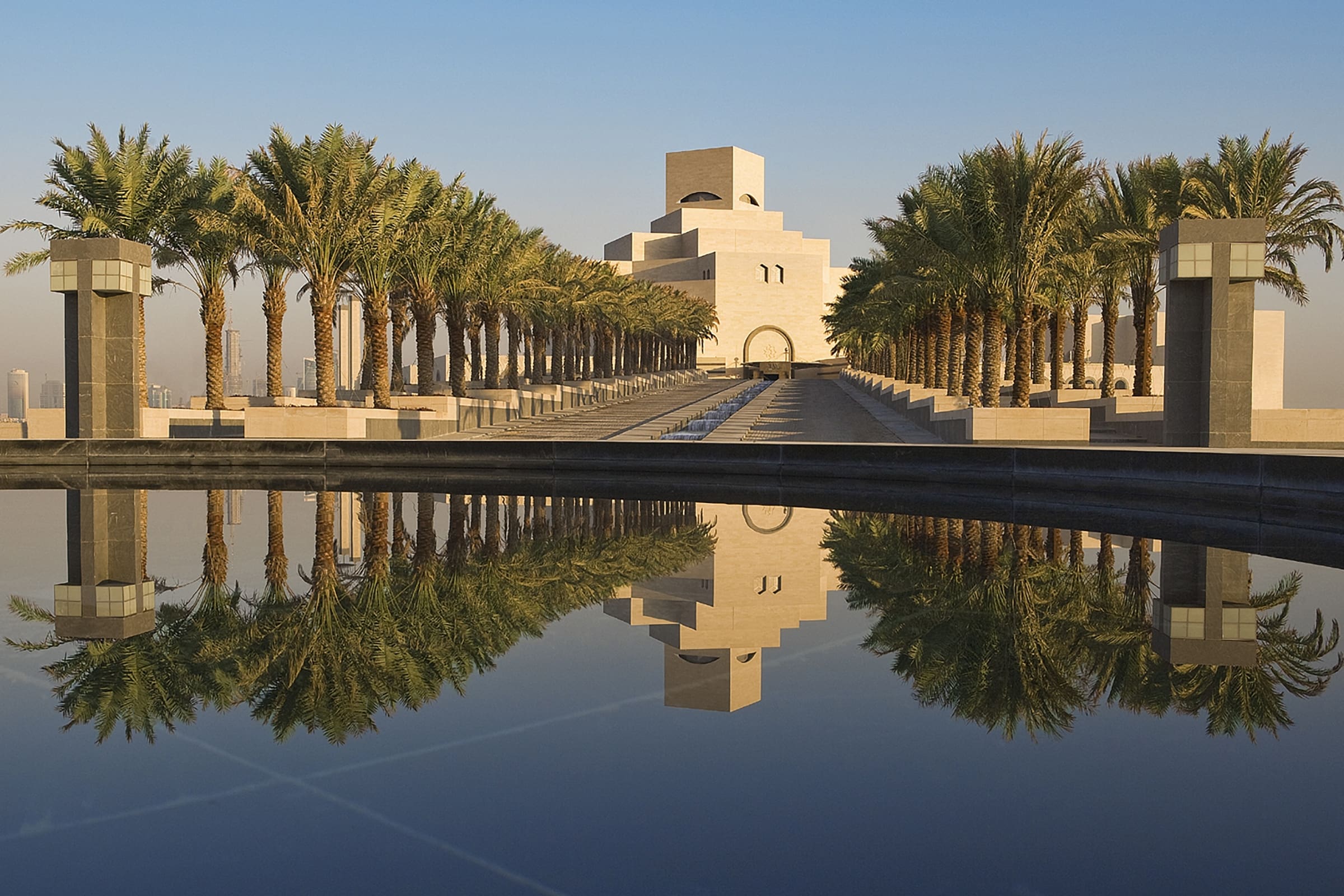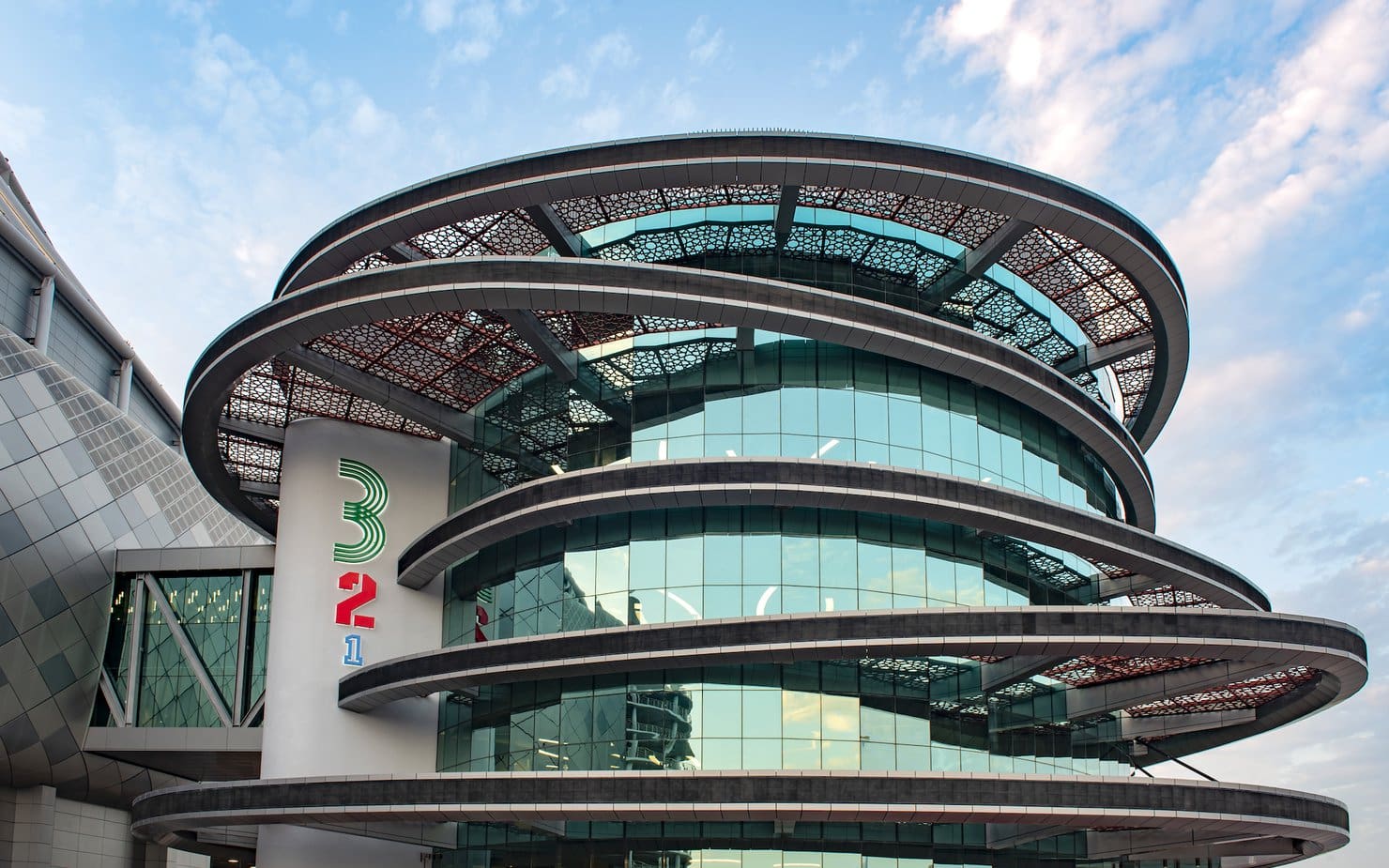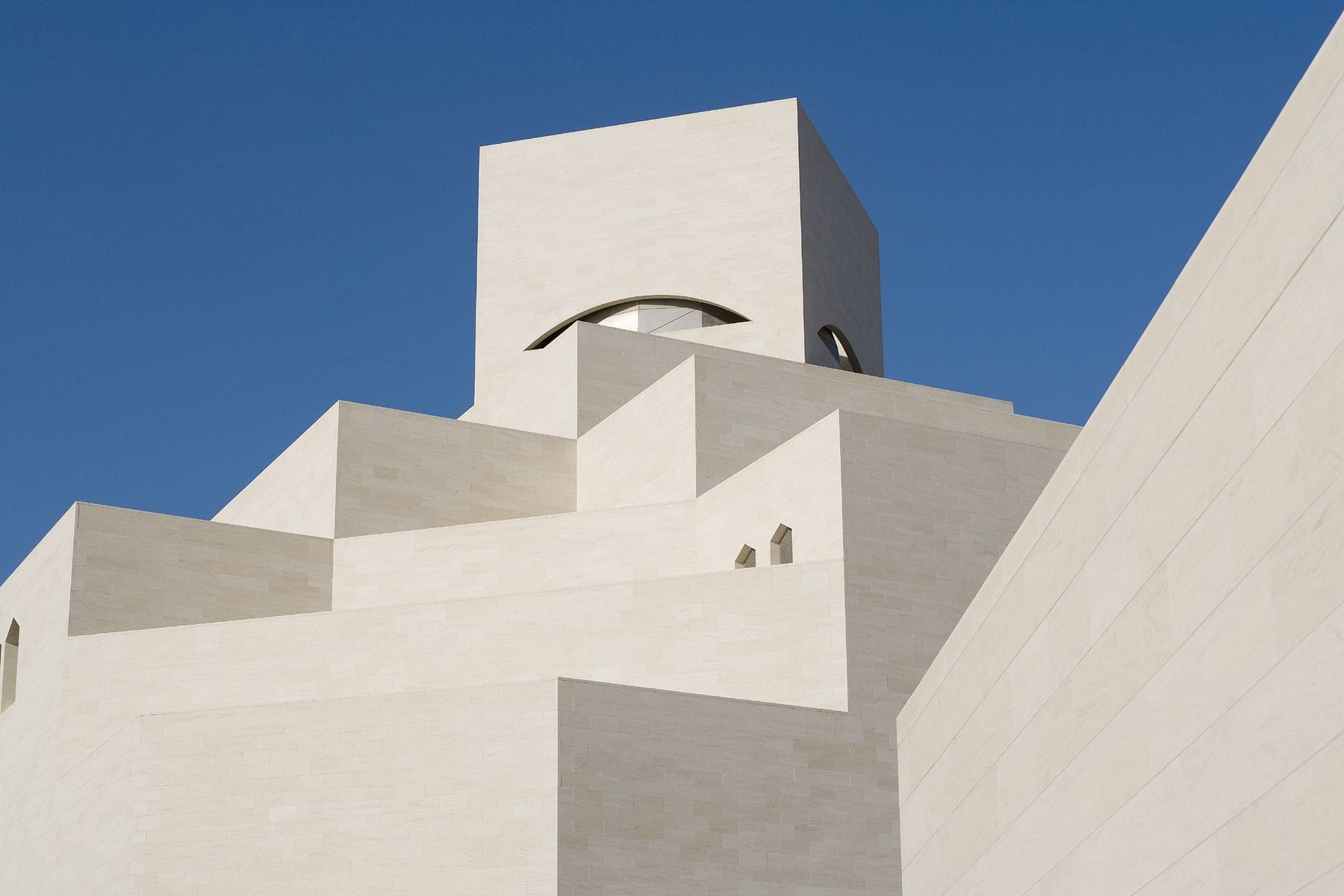My first indication that Qatar is a country unlike any other is the herd of metallic oryxes that greets me in the arrivals hall at Doha’s Hamad International Airport. Designed by Dutch sculptor Tom Claassen, it’s one of a dozen world-class artworks scattered throughout the terminal. But it isn’t until I’m standing at the paws of a 23-foot-tall pineapple-yellow teddy bear with a glowing lamp for a head — the eerily brilliant work of Swiss artist Urs Fischer — that I really start to wonder: Is this an airport or an art museum? The answer is both.
Her Excellency Sheikha Al Mayassa bint Hamad bin Khalifa Al Thani, chairperson of Qatar Museums and sister of the ruling emir, is one of the most powerful art buyers in the world. Her taste influences everything in this oil-rich nation. The royal family set a record when it paid a whopping $6.8 million for Fischer’s 20-ton teddy, but that’s chump change for a monarchy determined to transform its sliver of the Arabian Peninsula into a cultural polestar. Those strapping bronze oryxes? They’re just an amuse-bouche for the aesthetic feast that’s to come.
Qatar has been on a spending spree ever since it landed its bid for the 2022 FIFA World Cup, with more than a million visitors expected to descend upon the capital city come November. The frenzied expansion includes luxe hotels, shiny stadiums, and a slew of new and revitalized museums. Cranes are a staple on the skyline — which is so iconic now that it rivals Manhattan and Hong Kong. Even my Sri Lankan taxi driver, who has lived here on and off for six years, says he gets lost because the city changes so quickly.
I’m in town for the ribbon cutting of the new 3-2-1 Qatar Olympic and Sports Museum, which is timed to the World Cup draw. Drafted by Catalan architect Joan Sibina, it’s one of the largest sports museums on the planet and the first Arab institution to join the Olympic Museums Network. Its sprawling galleries trace the global history of sport, from Roman charioteers to Jamaican bobsledders, and showcase every Olympic torch from the 1936 games onward. I spend an hour strolling through the Hall of Athletes, taking in the stories of both icons (Babe Ruth, Tom Brady) and trailblazers (Japanese Paralympic swimmer Mayumi Narita).
The National Museum of Qatar, the brainchild of Pritzker Prize winner Jean Nouvel, is another recent addition that stops me dead in my tracks. Circling its exterior, I’m captivated by the building’s curvaceous interlocking discs, said to be inspired by the crystallized petals of the desert rose. I find the collection inside even more striking — especially the Pearl Carpet of Baroda, a 19th century rug embellished with more than 1.5 million pearls, diamonds, emeralds and sapphires. By the time I plunge into the rabbit hole that is Pipilotti Rist’s hallucinogenic “Your Brain to Me, My Brain to You,” the Swiss creative’s first site-specific installation in the Middle East, I’ve become officially entranced by these superlative museums.
But my checklist of must-sees doesn’t end there. Word has it Dutch architect Rem Koolhaas is so in love with his work at the Qatar National Library that he visits monthly. I see why as soon as I set foot in its soaring all-white interior. More than 400,000 books are shelved in a tiered lobby, while a maze of earthy Iranian marble displays collectible manuscripts. A tour typically takes three hours, but I have just one, most of which I spend scooping my jaw up off the floor.
I’m equally impressed with I.M. Pei’s Museum of Islamic Art, which rises like a cubist wedding cake out of the jade-hued Arabian Gulf. Slated to reopen shortly before the World Cup, it’s been undergoing a reimagining for the past 18 months. I sneak into the multistory lobby for a quick look and risk fainting like a Victorian duchess while taking in its glory.
In between museum hopping, I make the rounds to headlining shows at flagship galleries, including a haute couture Christian Dior retrospective at fashion incubator M7. I nosh on luscious halvah ice cream at contemporary Qatari eatery Saasna and get a behind-the-scenes tour of Culture Pass Club, the country’s first members-only arts club. Situated in a suite of 14 townhouses decorated by Diane von Furstenberg, India Mahdavi and other design luminaries, it’s the kind of place where VIP creatives go to hobnob and rest their heads.

Photography provided by Qatar Museums | Tom Claassen’s monumental sculpture Falcon (2021) outside the Hamad International Airport
Most enjoyably, I wander the back alleys of Souq Waqif, a shopping bazaar built on the site of a century-old trading market. My curiosity leads me to a row of Oudh vendors, hand-blown perfume bottles cluttering their shelves, and to spice shops selling mountains of pistachios and dried figs. I shuffle past men puffing clouds of fragrant shisha and women in niqabs ladling out batter for Nutella crepes. In the chaos of it all, I find more art: a giant severed thumb painted gold. One of the best-known sculptures by late French Nouveau Réalisme pioneer César Baldaccini, it stands out in the bustling market like, well, a sore thumb.
This high/low mix seems strange at first, but incongruity is a theme here. Women cover themselves head-to-toe in black abayas, for instance, but their hands are adorned with rare jewels and designer handbags. Bentleys and Lamborghinis idle at stoplights, driven by men dressed in princely thobes and gutras, while dust-caked laborers toil in the blazing sun just beyond the windshield. I quickly come to realize that Doha’s mind-boggling growth wouldn’t be possible without the migrant workers who grind away in the shadows, hammering the rafters of half-erect stadiums and delivering mint lemonades to poolside terraces. Most of these laborers come from Southeast Asia, and more than 6,000 of them have died in the city’s breakneck race to World Cup dominance — a distressing fact that any visitor marveling at these vertigo-inducing skyscrapers must grapple with.

Photography by Cindy Ord/Getty Images for Qatar Museums | Doha, Qatar – Richard Serra’s East-West/West-East sculpture in Zekreet on November 22, 2021
In that way, I’m grateful to escape the city. Paradoxically, the most memorable experience I have in Qatar happens in the middle-of-nowhere desert. After bouncing around in the back of a 4WD past gypsum plateaus and Dune–esque scrubbiness, I happen upon the holy grail: four steel slats some 170 feet tall standing upright in the ecru-colored sand.
“East-West/West-East” is the work of minimalist American sculptor Richard Serra. He named it this because viewers are supposed to start on one end, walk a kilometer east, then whirl around and walk back. I just happen to have timed it perfectly, so I’m the only one there as the sun sinks into the horizon, bleeding a tangerine puddle as it goes. Far removed from the glitz and glam of Doha, it’s just me and the art — and we both feel grounded.




